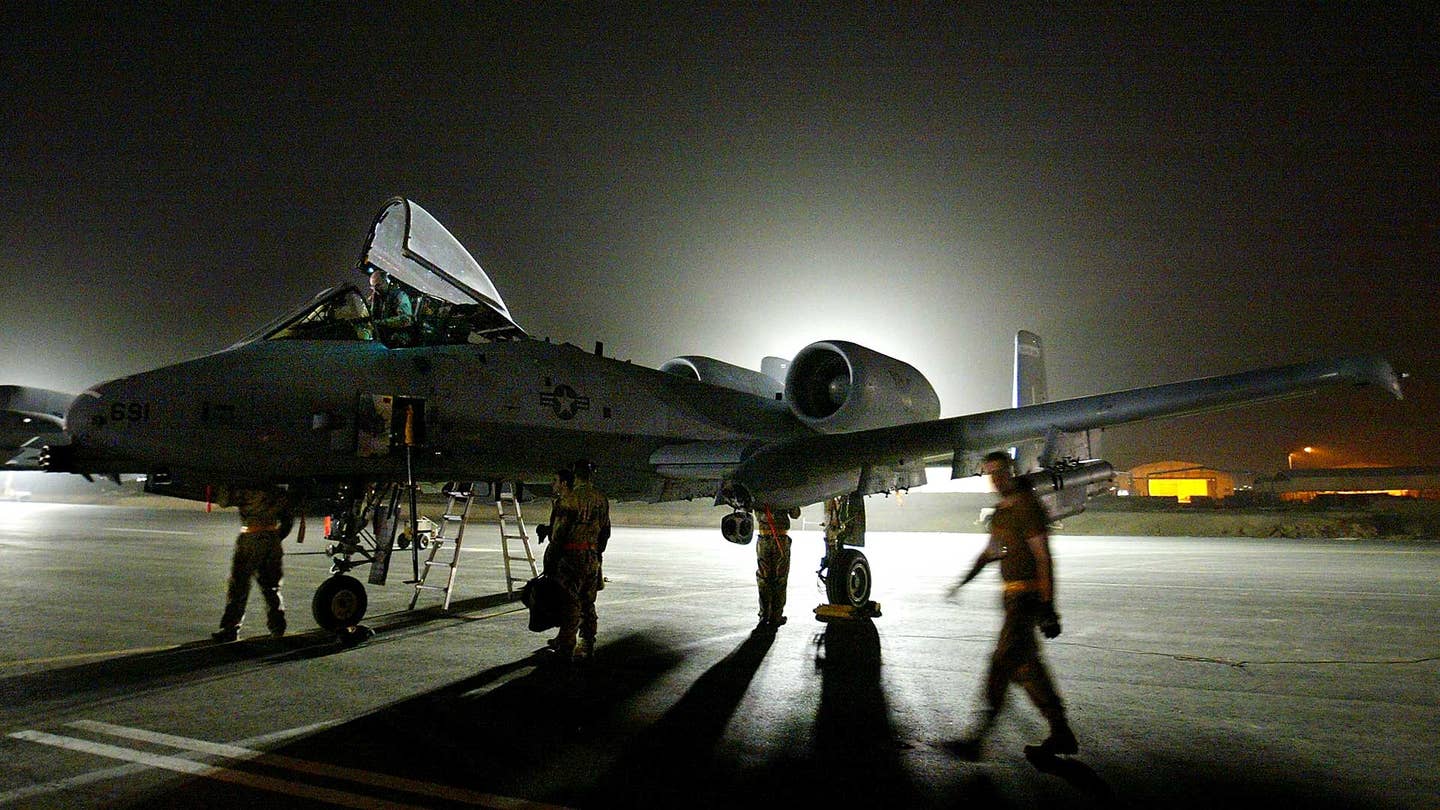Air Force to Keep the A-10 Warthog Airborne
At least until we clear up this pesky Islamic State problem.

After years of insisting that it needed to be put out to pasture, the U.S. Air Force has decided to keep the A-10 Thunderbolt II in the skies a while longer—and we ironically can thank the bad guys.
Defense One cited an unidentified Pentagon official as the source for its initial report. While it was originally designed to crack open Soviet tanks during the Cold War, the A-10, more commonly known as the Warthog, has proven an excellent tool in the fight against the Islamic State in Iraq and Syria, softening up ISIS targets for friendly forces on the ground and reportedly scaring the dookie out of militants.
The Warthog is also continuing to prove itself useful in Afghanistan, where American ground forces are staying longer than originally expected, and Africa, where militant groups are gaining strength, creating an environment which could soon require the use of American air support. They’ve also been posted to Europe and South Korea, in order to make saber-rattlers such as Vladimir Putin and Kim Jong-Un think twice about rolling armored vehicles across international borders.
“If I have them, I’m going to use them,” said the wonderfully nicknamed General Herbert “Hawk” Carlisle at a Defense Writers Group meeting late last year. “They’re a fantastic airplane and I’m going to take advantage of them.”
It's quite the one-eighty for the Air Force, which has insisted for years that the A-10 needed to be mothballed in order to free up maintenance funding for the boondoggle known as the F-35 program. In addition to replacing the Air Force’s F-16, the U.S. Navy’s F/A-18 and the Marine Corps’ AV-8B Harrier, the F-35 is supposed to take up the A-10's ground support role, though many critics insist the expensive, jack-of-all-trades F-35 is a poor replacement for the A-10.
Congress has resisted the A-10's termination, on the grounds that the F-35 remains a problematic aircraft and that the A-10 remains a superior air-to-ground platform. The Government Accounting Office has stated that the Department of Defense’s justification for scrapping the A-10 was based on “incomplete” information, and DoD officials have admitted in congressional hearings that the A-10 is better at close air support than the F-35.
Indeed, the A-10 is tailor-made for the ground-attack role. Its long, straight wings give it exceptional stability at low speeds. The high-mounted turbofan engines near the rear of the plane decrease the chances of debris being sucked inside, enabling it to take off and land from damaged or unconventional runways. Some 1,200 lbs of titanium armor line the cockpit and much of the airframe, enabling it to withstand 23mm machine gun fire—and even if damaged, the plane can fly even after losing both hydraulics systems and a good chunk of its flight surfaces. And while the A-10 can carry up to eight tons of bombs and missiles, the cornerstone of its armament is the 30mm GAU-8A Avenger seven-barrel Gatling gun in its nose, which spits out banana-size, armor-piercing depleted-uranium shells at 3,900 rounds per minute—and sounds like a rabid chainsaw.
